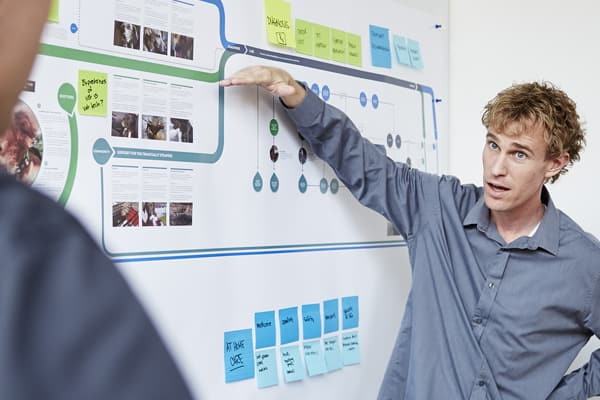Why understanding your macro and micro level actionable insights can help define the problem worth solving.
LEVEL YOUR INSIGHTS FOR MAXIMUM IMPACT
Think of the last time you lied. (It’s okay; we’ve all done it.) Maybe you told a little white lie in the moment — a tactic most people use once in a while to avoid hurting a friend’s feelings. Or maybe your fib was something bigger, a strategic distortion of truth that changed the way many people thought about a person or action in a grander sense. Unless you’re making a living lying (or need to check your moral compass), no matter the intent, these untruths can end up having a significant impact, whether big or small.
In the same way that lies can be considered big or small, strategically high-level or tactically low-level, so can truths. And while no one wants to be caught in the business of lying, there are many people who make a living uncovering truths.
ALTITUDE DRIVES ACTIONABILITY
At the start of a design research project, people often get excited about the opportunities they’ll uncover and the different points of inspiration they might see along the way. But a big part of any project is thinking through how the information you find will be used; different choices early on can lead to very different outcomes later. So before getting lost in the excitement, it’s important to discuss the level of detail or granularity needed that will drive the most actionable insights for your particular project.
Macro insights define the “problems worth solving.” They will help you to identify thematic opportunities such as trends, consumer needs, barriers and enablers to adoption.
In THRIVE’s Research & Strategy practice, we are in the business of illuminating truths in the form of actionable insights to fuel human-centered design innovation. These truths are called macro level and micro level insights. You can create successful solutions based on actionable insights at either level, but it can be tricky to figure out what level or altitude of insight will support your particular project goals best. It’s an important conversation to have — yet one that most people skip. Here’s why you shouldn’t.
If we are researching home kitchen renovation, for example, with a macro view we might look at the ambience consumers want to create from a thematic perspective, and gain actionable insight into themes driving the future of home decor (eco-friendly living, minimalism, rustic, etc.) so we can identify white space for growth within the intersections between consumer motivation and market momentum. In this way, understanding users from a macro perspective can be the first place to play if you need foundational inspiration for new-to-the-world innovations.
Micro insights will tell you if you’re “solving the problem right.” They will help you to understand: the nuances of more granular behaviors, specific pain points within a journey, or reactions to potential solutions. If we are using the lens of micro actionable insights related to home kitchen renovation, we might look at the specific interactions people have with a single appliance and how those choices serve (or don’t serve) their process, so that we can inform human-centered, new product design. In this way, micro actionable insights can be powerful tools to calibrate new product ideas for success — so they stand out in a crowded market or drive into a new, previously untapped niche.
HOW DO I KNOW WHAT LEVEL I NEED?
The first question to ask yourself is: Are you looking to understand the problems worth solving, or whether the specific way you’re solving for them is the right one? Once you’ve got a hunch, talk it through with a trusted partner. A good partner can be like a pilot, a strategic thinker who can talk with you about your project objectives and help you to adjust up or down to reach the optimal altitude.
Yet, a single lens can sometimes be myopic. Even if you’ve already gained insight at one of the altitudes, you may still want to explore an issue at the opposing level. Say you’ve already done exploratory consumer observation or high-level competitive work. Without going deeper to understand what your users think and feel in regards to a specific product or service, you still risk missing the mark; your solutions might not resonate with real people. Conversely, if you’ve taken a very granular approach and built a customer journey map to capture nuanced user experiences and find their pain points, you might end up solving a problem a dozen other competitors already have, or miss out on creating solutions that have a bigger impact. Applying a broader (or more granular) level of actionable insight into your issue might change the solution you pursue.
Knowing where to start can be tricky. That’s another reason having this conversation is so important. At first blush, most projects seem to sit somewhere in the messy middle between macro and micro. This tension makes it tempting to avoid making a decision. Rather than cast too wide a net and risk a scattered approach that leaves uncertainty at every level, you might consider a multi-phased approach that’s particularly suited to capturing the altitude that drives action at each level. Still, don’t know where to start? Let’s talk.








